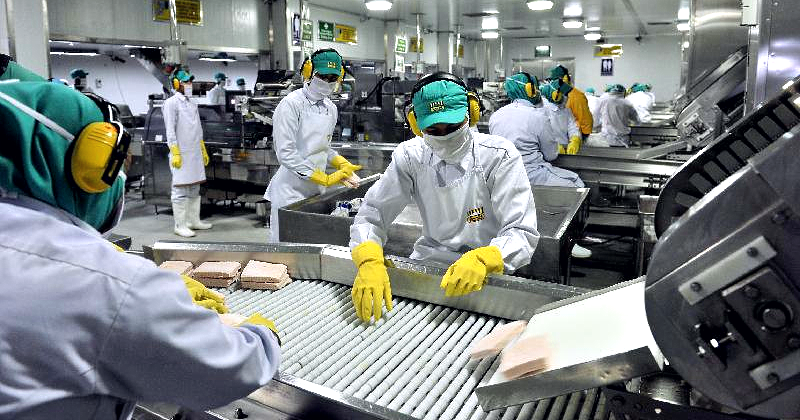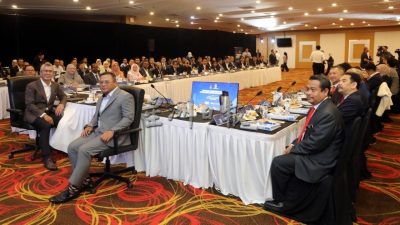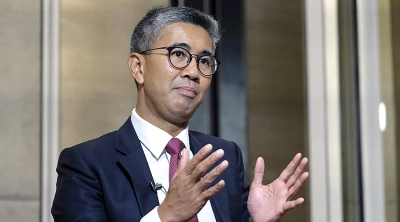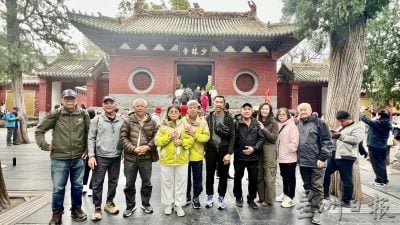
The first half of 2023 saw Malaysia’s economy chalking many positive indicators, including the 5.6% growth in 1Q2023, which topped forecasts and made Malaysia remain ahead of many regional peers.
In that period, Malaysia also attracted RM71.4 billion in approved investments, up by 60% year-on-year.
Inflation was at 2.8% in May 2023, the lowest in a year.
In 1H2023, MITI has garnered more than RM230 billion in committed investments, and more than RM10 billion in terms of trade.
For 2H2023, we will expand our efforts in Europe and the Middle East, with a strong focus on realizing the leads garnered in 1H2023.
Although growth will likely moderate in 2Q2023, the Government remains optimistic that we will meet this year’s projections of between 4-to-5%.
But make no mistake, trade will be challenging—worldwide.
In April alone, the numbers for Malaysia were down by 14.5% y-o-y. This was largely caused by global uncertainties, especially the contraction in exports to the EU and US.
According UNCTAD’s June 2023 report, while global trade rebounded in 1Q2023, prospects for the rest of the year remain bleak.
With our trade-to-GDP ratio being more than 130%, we are vulnerable to global trade slowdowns.
So how can we build resilience? One way is to build competitiveness.
Current competitiveness sufficient but not transformative
Malaysia’s recent increase in the IMD World Competitiveness Ranking (WCR) by five spots from 32 in 2022 to 27 in 2023 is proof that our economy is on the right track.
The report—which placed us as the second most competitive Asean economy after Singapore—noted that Malaysia has done well in managing prices, basic infrastructure, and tax policies, but could do better in talent development for an industry-ready workforce, regulatory reforms for ease of doing business, a digital-first mindset for critical sectors and pursuing sustainable development.
The Ministry of Investment, Trade and Industry (MITI) which I lead is currently working very hard on all these fronts.
Talent development initiatives such as Academy in Industry (AiI) to help youths to acquire relevant skills to build a good career in the manufacturing industry—a key driver of our economy.
Run by the Malaysia Productivity Corporation, AiI offers 300,000 job opportunities by 2023 across high impact sectors such as automotive and semiconductors.
To improve the ease of doing business, MITI is currently focused on streamlining the 31 Investment Promotion Agencies (IPAs), with MIDA leading the way.
We have identified 13 pain points along the investor journey and are working at addressing them quickly.
This is crucial in attracting, retaining and increasing both Foreign Direct Investment and Domestic Direct Investment, even in off-cycle periods.
While all these are beneficial initiatives, they have limited impact on building the resilience of our manufacturing industries, who are generally ill-equipped to counter operational challenges caused by geopolitical risks that disrupt supply chains, resource scarcity that threaten energy-utility security, and climate change disasters that risk the very survival of humanity.
For a start, a comparative analysis of economic complexity (which supports economic resilience) indices reveals that Malaysia lags behind countries such as Japan, South Korea, Taiwan and Singapore.
Currently, Malaysia’s involvement in the manufacturing value chain remains concentrated in relatively lower-value segments.
For instance, in sectors like electronics and semiconductors, our focus lies more in assembly and testing rather than design, limiting our ability to capture higher-revenue activities.
Similarly, in the palm oil industry, Malaysia engages primarily in crude palm oil production, missing out on the potential higher forex earning benefits of downstream processing and value addition, a key factor in ensuring the strength of the ringgit.
And while we welcome the relocation of international businesses looking to enhance their supply-chain resilience following continued US-China tensions, this is only one aspect of developing a solid manufacturing sector.
So, when it comes to building our manufacturing and export industries’ resilience, we need to go BIG or we might as well go home!
What I mean by that is that Malaysia needs to be more transformative and strategic to re-engineer the very core our manufacturing and export sectors to build a more resilient economy.
MITI’s strategy to go big
This is where MITI’s New Industrial Master Plan 2030 (NIMP2030) comes into play.
We have had various stakeholder engagements to finalize and fine-tune the policy for its August debut.
We have also aggressively pushed investments in E&E (including medical devices), chemical and petrochemicals, digital economy, aerospace engineering and pharmaceuticals.
Skeptics will ask: how is the NIMP2030 different from previous industrial master plans?
For a start, we will move away from the nation’s previous sector-based approach, and adopt a mission-based approach to drive manufacturing industry transformation in four ways, i.e. by advancing economic complexity, teching-up for a digitally vibrant nation, pushing for Net Zero targets, and safeguarding economic security and inclusivity.
Our key objective is to get all sectors to embrace these missions, which presents a much higher success rate to secure Malaysia’s future socioeconomic prosperity by, among others, growing opportunities and generating higher wages for the 2.4 million individuals, or 15% of Malaysia’s total employment.
Further, the manufacturing industry currently contributes 25% of Malaysia’s GDP and 80% of the country’s total exports.
Hence, transforming it will undoubtedly lead to broad-based growth and the much-needed rebuilding of Malaysia’s middle-class purchasing power, post-pandemic.
NIMP2030’s mission to push for net zero will also be strongly supported by targeted investments in green economy such as carbon-capture utilization and storage, renewable energy, electric mobility, hydrogen energy and low-carbon transition technologies.
Further, the National Environmental, Social and Governance Industry Framework (i-ESG) for the manufacturing sector that MITI is presently finalizing will also support SMEs’ embracing of ESG.
Otherwise, they might find themselves shut out of ESG-sensitive markets, effectively reducing the benefits of numerous Free Trade Agreements that MITI had negotiated so hard for.
So, while the rest of 2023 will be challenging, MITI remains focused on the long game for Malaysia.
As a key partner for the investment and business community, the choice is ours: we can either be forced to “go home” by global headwinds, or we can go big on serious execution of reforms in our manufacturing sector to keep building trust and restore confidence in the Malaysian economic re-bound story.
MITI has chosen to go big.

(Tengku Zafrul Tengku Abdul Aziz is the Minister of Investment, Trade and Industry, Malaysia.)
ADVERTISEMENT
ADVERTISEMENT







































